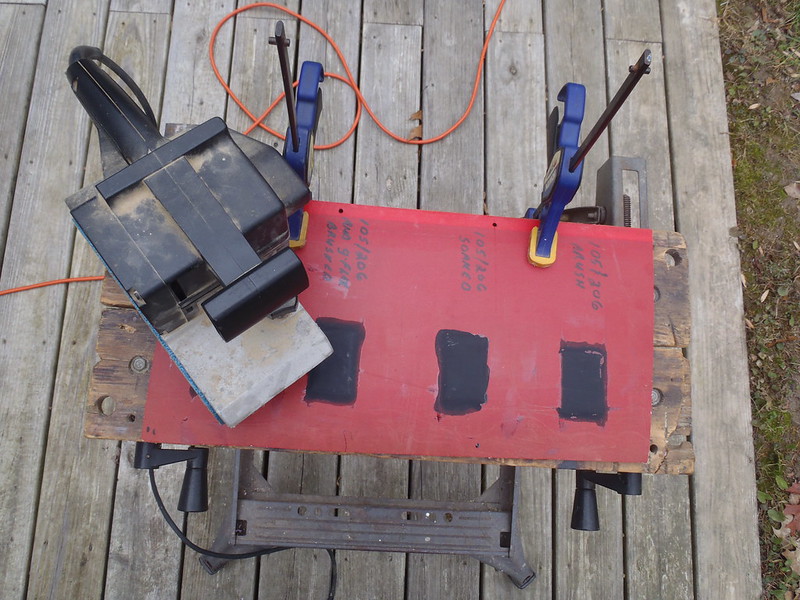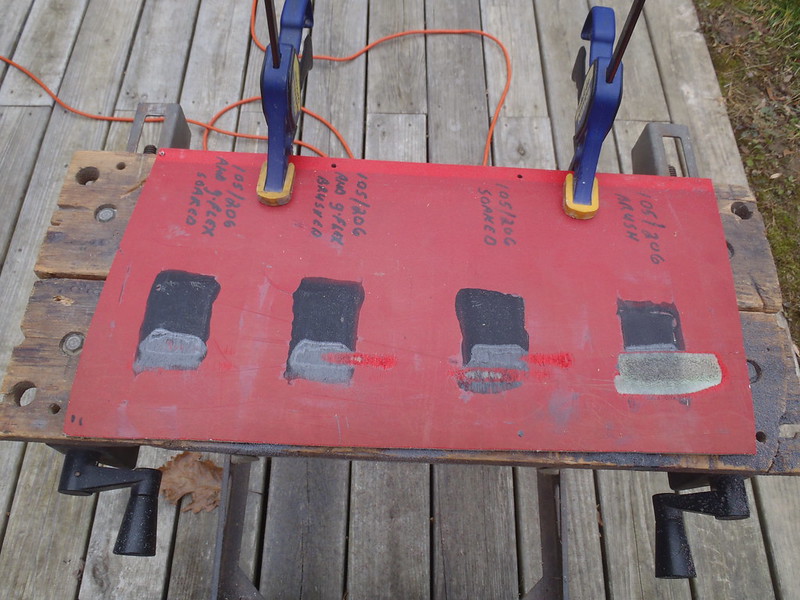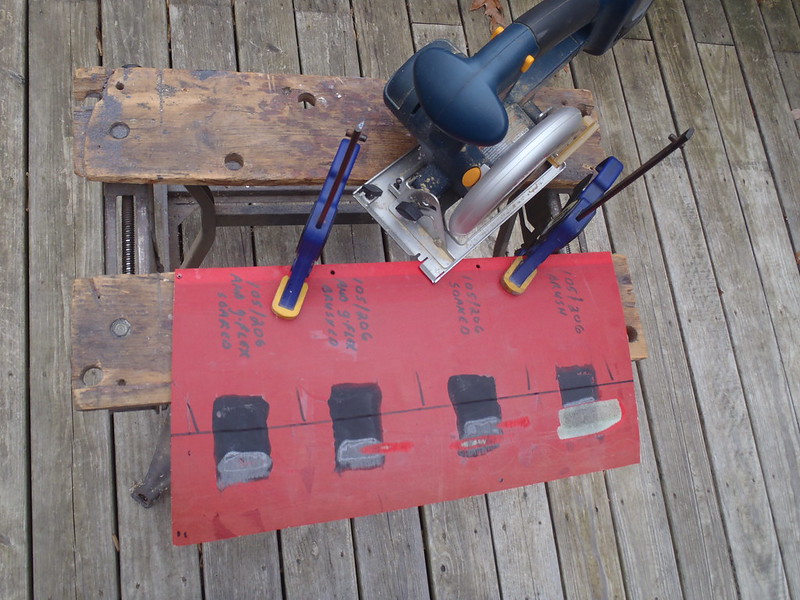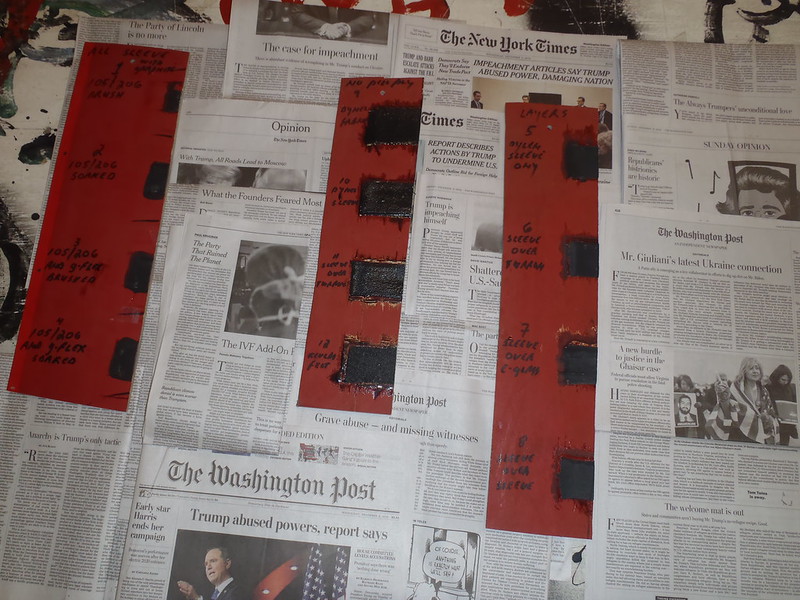At first, I would have thought stem reinforcement would best be made out of the material whitewater and other tough hulls typically have as the outside layer. That would encompass S-glass, carbon, Innegra H, Tuffweave, Blue Steel . . . and, oh, aluminum. But I guess that's all wrong. Everyone seems to love this Dynel fabric, which I believe I have as edging on one or two of my wooden paddles.
I know from unprotected stem wear on various composite hulls, and on different skid plates and experiments, that S-glass and carbon (or Kevlar/Twaron) are not nearly as abrasion resistant as Dynel. Tuf-weave hulls (50/50 interwoven polyester & fiberglass) seem more abrasion resistant than just glass, but less than even a single layer of Dynel.
I do not have enough experience with Blue Steel (kevlar & carbon) to have an opinion, and zero experience with Innegra (basalt/kevlar/carbon?).
With
any material I would not expect to see much need-to-repair abrasion damage on gently used, always wet foot exit, never dragged boats. None of that daintiness is applicable to our boats. The boats I treat more delicately, or paddle in less abusive environments, are in better stem shape for longer, but have still eventually needed help.
So, Mike, perhaps you could summarize your empirical findings for us who need a Skid Plates for Dummies, here or somewhere. In particular, I'd be interested in pithy answers to the following:
Not pithy*. Yes empirical, not scientific. Here goes:
-- Favorite material: Is it now the wider Dynel tubing?
Dynel as a skid plate outer layer, absolutely. On a fatter stemmed hull probably 5oz Dynel fabric, cut to oblong length and width so that it overlaps existing wear by an inch or so all around. On a boat at sees both impact and abrasion on the stems incorporating an underlay of some thicker fabric, perhaps laid on the bias, seems worth the minor extra effort.
On a sharp stemmed hull where the wear is confined to a long, narrow (less than 1.5” wide) area I would use the wider “standard weight” Dynel sleeve for ease of installation. Perhaps with an underlayer, ie a strip of 1 ¾” wide Dynel sleeve over 1” wide glass tape, or even over another 1 ½” wide Dynel sleeve for multi-Dynel layers where the abuse is all abrasion wear.
-- Favorite resin: Regular epoxy, G-flex epoxy, or a mixture? If a mixture, why?
I use a 50/50 mix of “regular” epoxy and G/flex on Royalex boats, where some extra resin toughness, flexibility and improved adhesion on vinyl skin would be advantageous. On a composite hull I would now use just regular epoxy; the abrasion toughness is more in the Dynel fabric than the epoxy.
About “regular” epoxy, this info from Alan was eye opening, especially in light of some of the (hand laid) experimental test material inspections showing resin starvation or at least incomplete saturation. The ideal might be a vacuum bagged multi-layer skid plate with Dynel on top. Never gonna happen in my shop.
I agree with Mem in that probably the easiest way to wet out thick fabric is to use a thinner resin that's made to wet out thicker fabric. I've used resins ranging from 200-1000 centipoise (measure of viscosity) and can say there's a big difference in how it flows and wets out cloth.
I looked quick and found these viscosity specs:
West 105 - 1000 centipoise
Raka - 600
System 3 clear coat - 380
Vinyl Ester - ~200
-- Favorite resin saturation method: Brush on or dunk saturate?
In light of Alan’s info my favorite might be Raka or System 3 for more thorough epoxy saturation, but I have never used either. The more viscous West 105/206, or even 105/206 & G/flex mix, works well enough on skid plate sized pieces. Cutting through the past test pieces for a look at the sandwich saturation did not reveal a noticeable difference between straight epoxy and the G/flex mix.
If only to save from wasting epoxy I’d probably just brush epoxy on the hull, lay the cloth, or roll it out from a cut-to-length rolled coil in place atop the epoxy base coat, especially if overlong to hold between two hands, and brush more epoxy on top before compressing under peel ply.
I may know more about that when I cut up the last batch of two-layer skid plate test pieces; the thicker materials underneath the Dynel sleeve might benefit from the dunk saturate method. I will know more in a few days when I grind/cut up the most recent test pieces.
-- Filler in the resin? Why?
If by “filler” you mean Graphite powder I would now add it only to the topcoat layer of epoxy. I’m not sure if the epoxy mixed with fine particulate graphite powder saturates the cloth as fully, especially with a tight weave or thick cloth, and I don’t need the
low-friction exterior coating with increased scuff resistance and durability anywhere except the outer coating.
Beyond durability and scuff resistance Graphite powder also adds some UV protection. From the West System manual:
“Both pigments and WEST SYSTEM 420 Aluminum Powder provide protection from sunlight. Epoxy breaks down under prolonged exposure to ultraviolet light; if you do not plan to coat your hull with a finish system immediately, add either pigment or powder to your last coat of epoxy”
“This is a temporary measure which does not replace a final paint finish. Aluminum powder is more difficult to sand than pigment, so we suggest using it only on areas that are already fair and smooth. WEST SYSTEM 423 Graphite Powder is used in specific areas in specialized coating applications. Graphite powder/epoxy coatings are occasionally applied to rudders, centerboards, and drysailed racers. They provide low friction coatings with increased scuff resistance and also provide UV protection”.
I thought about using aluminum powder, hoping it might create a not-milky-white skid plate if used with white pigment:
“Aluminum Powder provides limited protection from ultraviolet light in areas that will not be protected with other coatings. Can be used as a base for subsequent painting. 420 will increase the hardness and abrasion resistance of the coated surface and improve its moisture resistance. Cures to a metallic gray color.”
The “metallic gray” sounds ugly, and I’m not sure white pigment would hide it, and I’m not buying a whole can of aluminum powder just to find out. On white bottomed hulls where I want the Dynel to be all but invisible I just use white pigment and topcoat with white paint.
-- Tint in the resin? Why, other than aesthetics?
See above. Pigment/color agents also add some UV protection to the resin. The benefit of a white pigmented skid plate on a white hull bottom would be that the inevitable white scratches would blend in better. Although that would disguise the visibility of future wear areas that might need attention.
-- Paint over the skid plate? Why? Won't that be the first thing to immediately scrape off? If any sort of top layer, why not gel coat?
The paint is the first thing to get scraped off, but slowly, over time, and not off the entire skid plate fabric, so much of the painted surface remains intact and providing an additional layer of UV protection. And, after a few years, a paint re-application is cheap and easy.
Mostly though I topcoat graphite/black pigment skid plates because gives me an easy way to straighten up any sloppy lines and the final result looks better.
Why not gel coat? If you mean gel coat over the abrasion resistant Dynel material, in order to sit flush it would need to be almost as sacrificially thin as paint, at least in my hands. I have little gel coat repair experience, but have seen that it wears away faster than Dynel in abusive conditions.
For me I apply a skid plate for protection, I could care less about looks so as long as it's placed correctly with as few drips as possible I'm happy.
I can’t stop myself from un-drippy double taping, pigmenting or graphite powdering and paint topcoating. Adding the graphite powder and/or black pigment when mixing the epoxy takes only seconds, and topcoating the cured epoxy with paint is a quick, easy and inexpensive step. Some of our older beater boats may look like heck right side up, but upside down the skid plates look good.
*Not pithy concise at all. Having started down the skid plate materials testing road I remain interested in improving my best materials and practices. I could try to list/count the number of skid plates I have installed in the last 30 years (first one, an Old Town kev felt kit, was in 1988). I’m sure that number, between our current and past boats, resurrected boats and friend’s boats that have visited the shop is in the 30’s. Or, counting the batch of hulls in the past couple Dynel-loving months, the 40’s.
At least a half dozen of those were kevlar felt skid plate kits or kit left overs, and a few more were DIY’s using purchased kevlar felt and epoxy.
I regret every one of the felt fuglies I ever installed, and the continuing Dynel experiments may be a form of penance. Which beats self-flagellation, fasting, avoiding alcohol and tobacco, wearing a scrotal cilice, swearing off weed for Lent or other privations. Dynel skid plate experiments sound better all the time.
I am still hoping that West Systems EpoxyWorks Journal will replicate the skid plate tests, using a variety of materials and (West of course) epoxy mixes and additives, with actual
scientific measurements of impact and abrasion resistance.
If I knew how to post a Poll on Canoe Tripping the skid plate the results of a skid plate questionnaire might be interesting. As long as the first poll question isn’t:
Do you find skid plates on canoes?
A – Heavy
B - Thick
C – Ugly
D - Unnecessary
E – Some combination of the above
 PB290001 by Mike McCrea, on Flickr
PB290001 by Mike McCrea, on Flickr PB290004 by Mike McCrea, on Flickr
PB290004 by Mike McCrea, on Flickr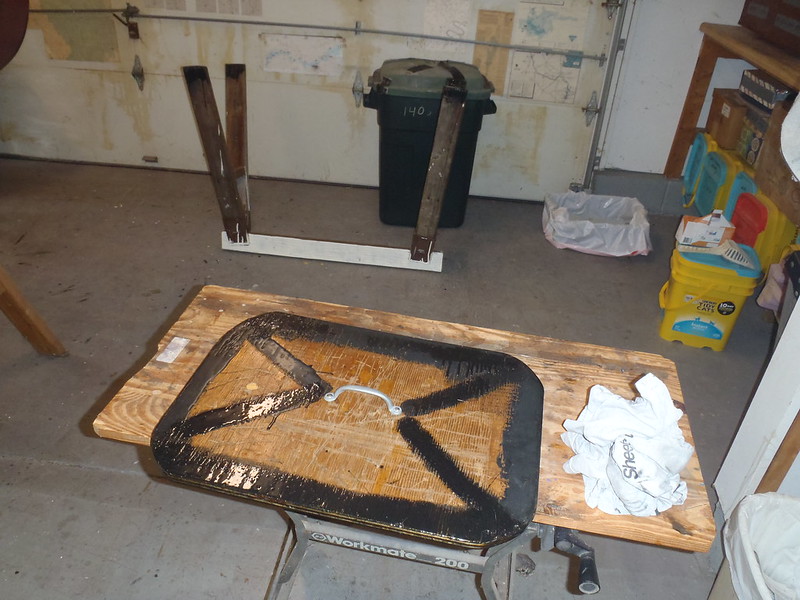 PB290005 by Mike McCrea, on Flickr
PB290005 by Mike McCrea, on Flickr PB300009 by Mike McCrea, on Flickr
PB300009 by Mike McCrea, on Flickr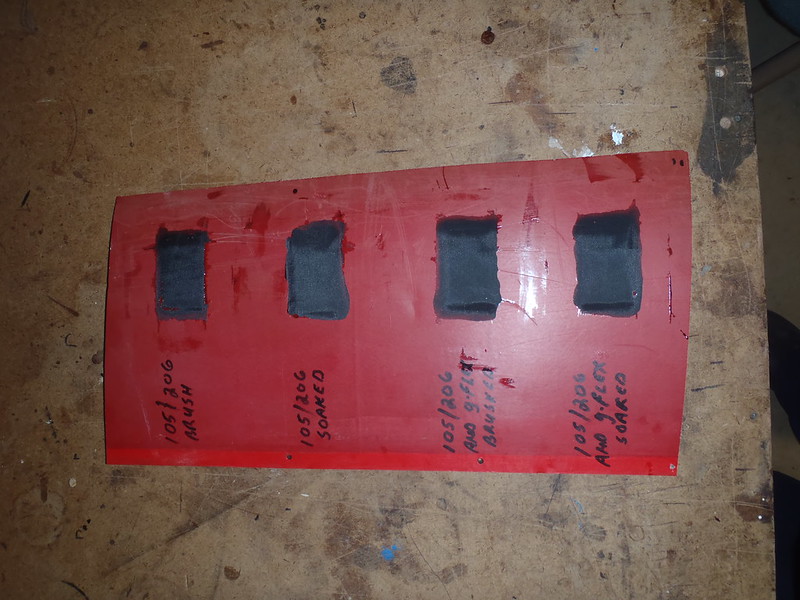 PC010010 by Mike McCrea, on Flickr
PC010010 by Mike McCrea, on Flickr
